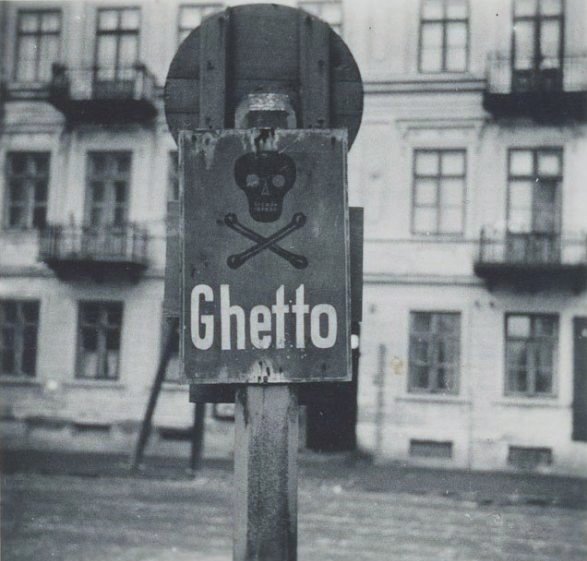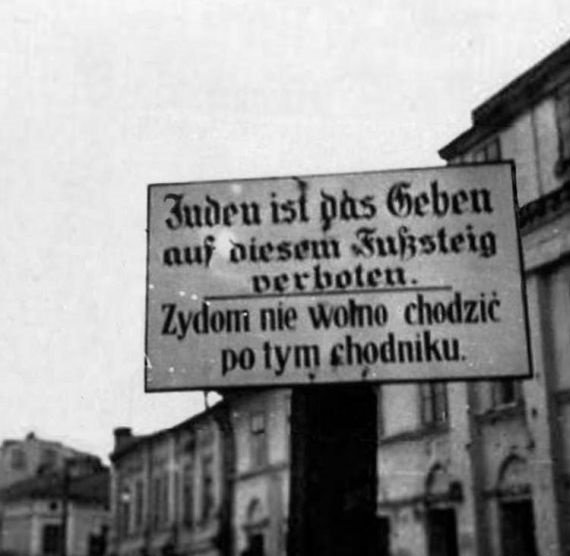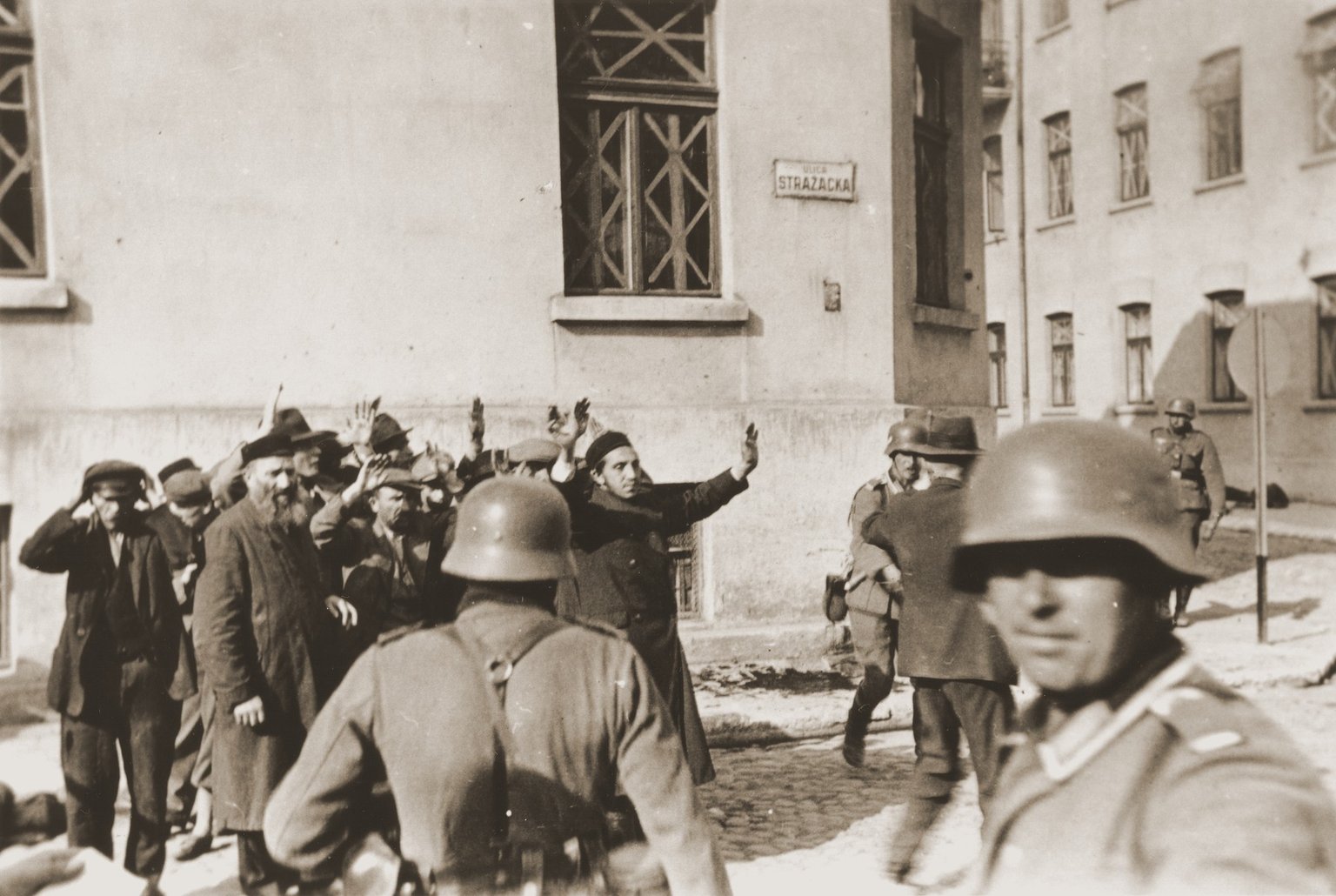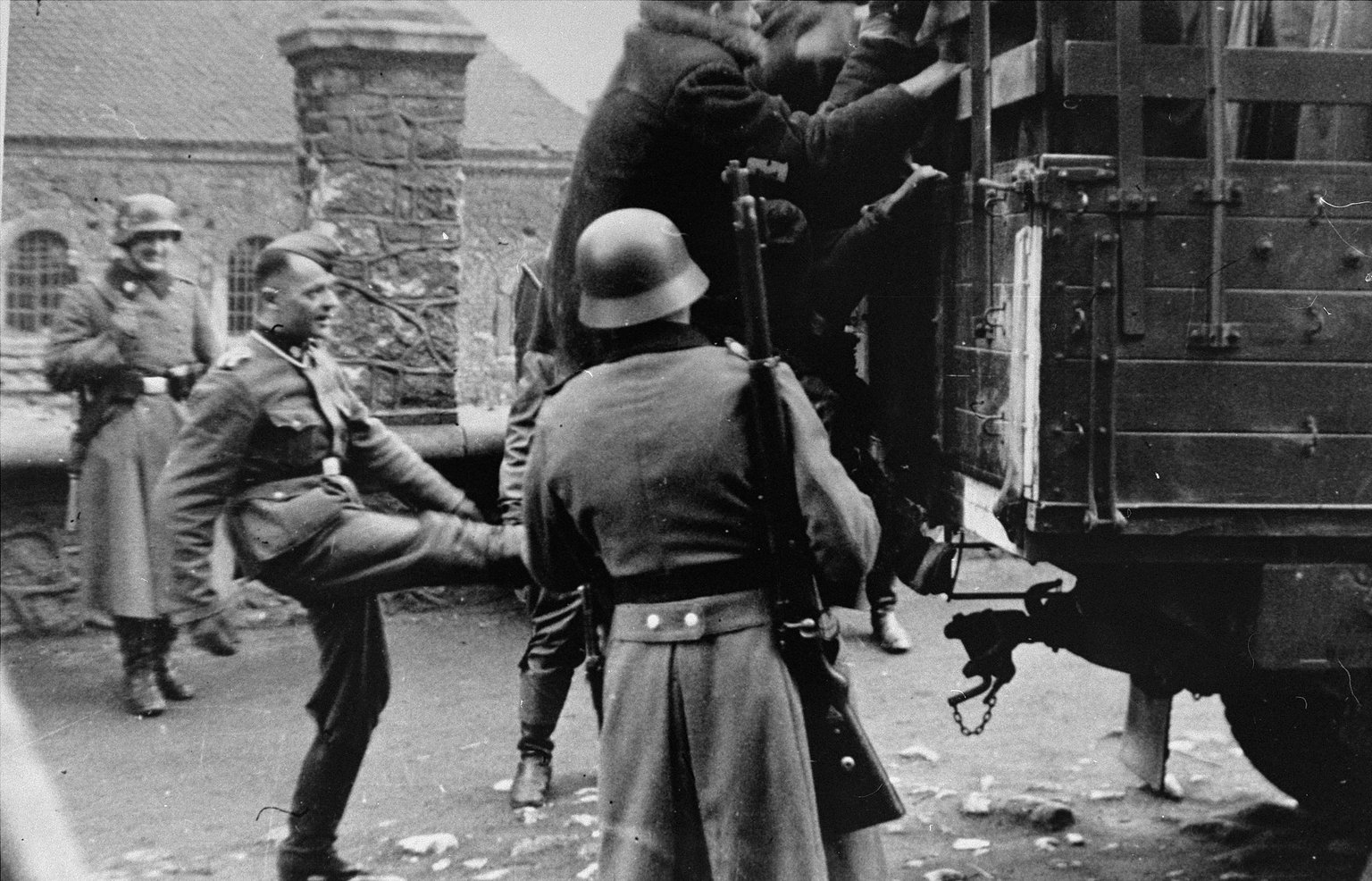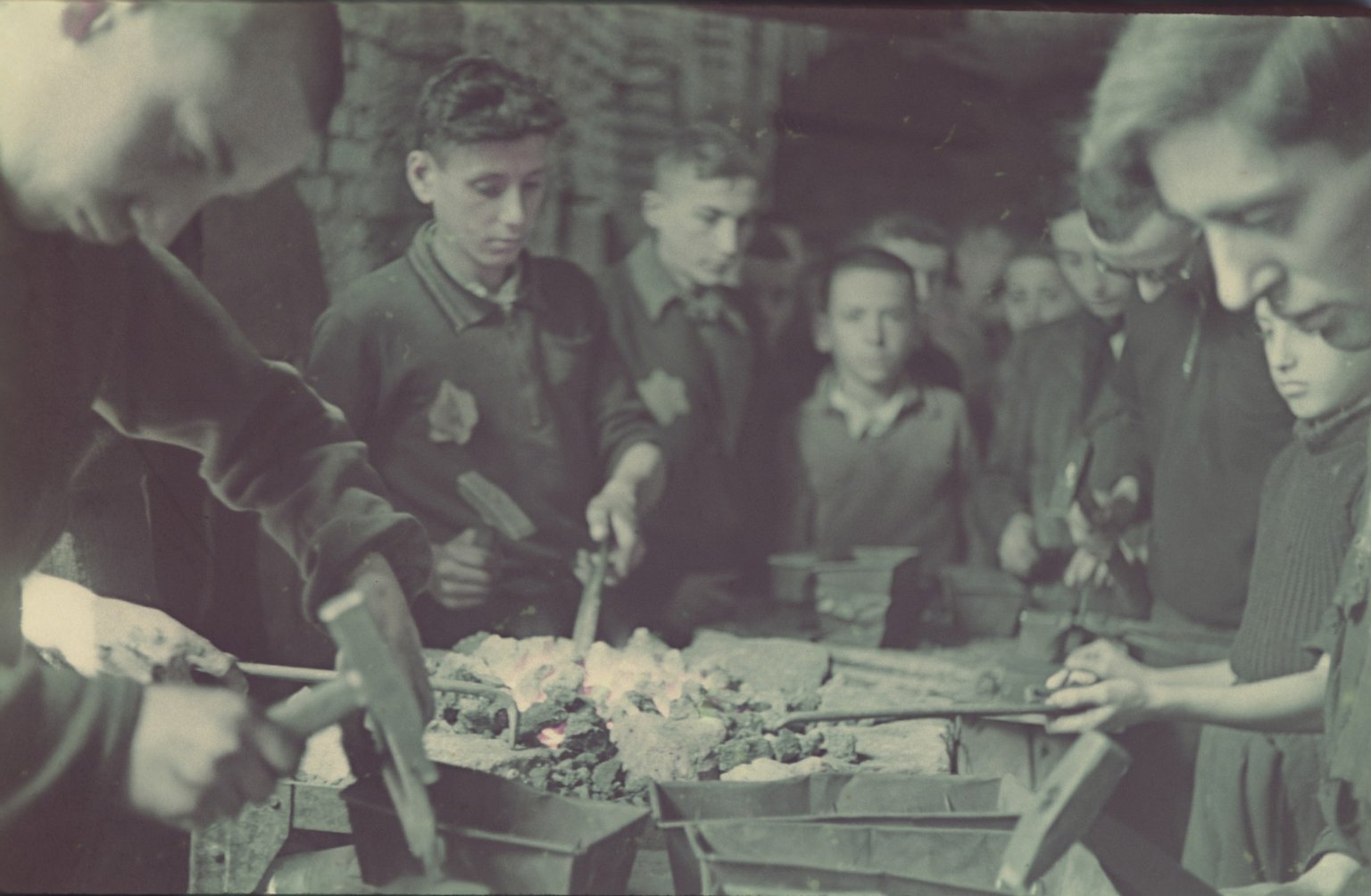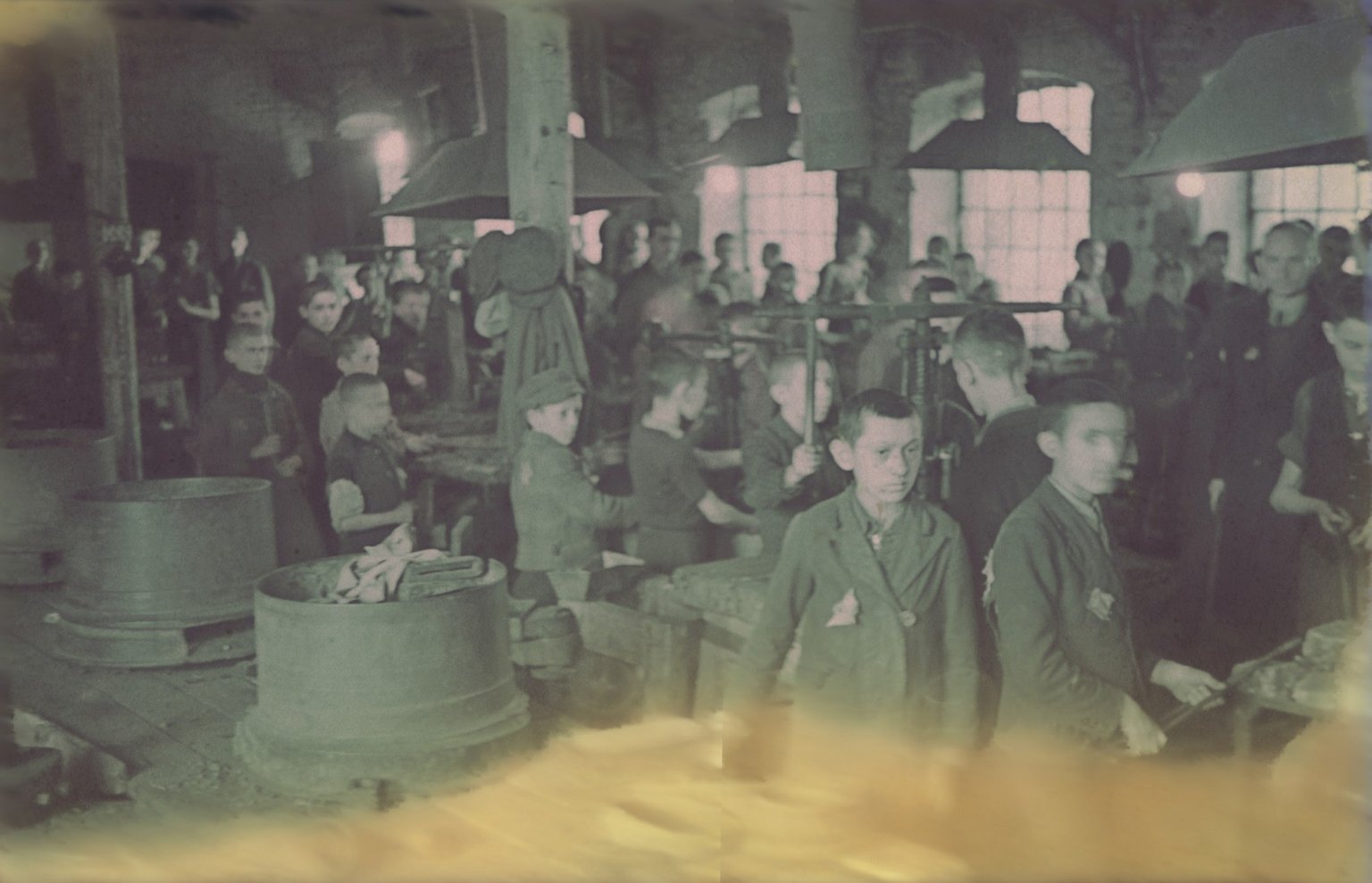On 8 October 1939, the Germans established their first ghetto for Jews in Piotrków Trybunalski, a town in the western part of occupied Poland. All of the Jews from this town were made to move to the ghetto. Jews from the surrounding area were taken there as well. The ones who did not move of their own accord were taken there by force. Before long, more ghettos were being built. In 1940, the Nazis added about ninety new ghettos.
Ghettos in occupied Poland
Oct. 8, 1939 Piotrków Trybunalski
The Piotrków ghetto was open, but most ghettos were enclosed by walls, fences, and barbed wire. The purpose was to sever relations between the Jews and non-Jews. Moreover, it gave the Nazis control over their living conditions. The inhabitants of a number of ghettos, such as that of Łódź, worked as cheap forced labourers in German factories.
Living conditions in the ghettos were appaling. People were unable to arrange food or medical care on their own. Living quarters were cramped because they had to share their homes with other Jews, who were often strangers. Non-Jewish Poles who helped them were severely punished. Many Jews died of hunger and disease.
The number of people living in one ghetto ranged from 500 to tens of thousands. The largest ghetto was established in Warsaw in October 1940. It housed around 450,000 Jews, more than half of whom came from other towns.
Some ghettos were dismantled over time and their inhabitants were moved to other ghettos. However, most Jews remained in the ghettos until 1942, when the Nazis deported them to the newly built extermination camps.
90% of the Jewish population of former Poland was murdered by the Nazis: almost 3,000,000 people.
